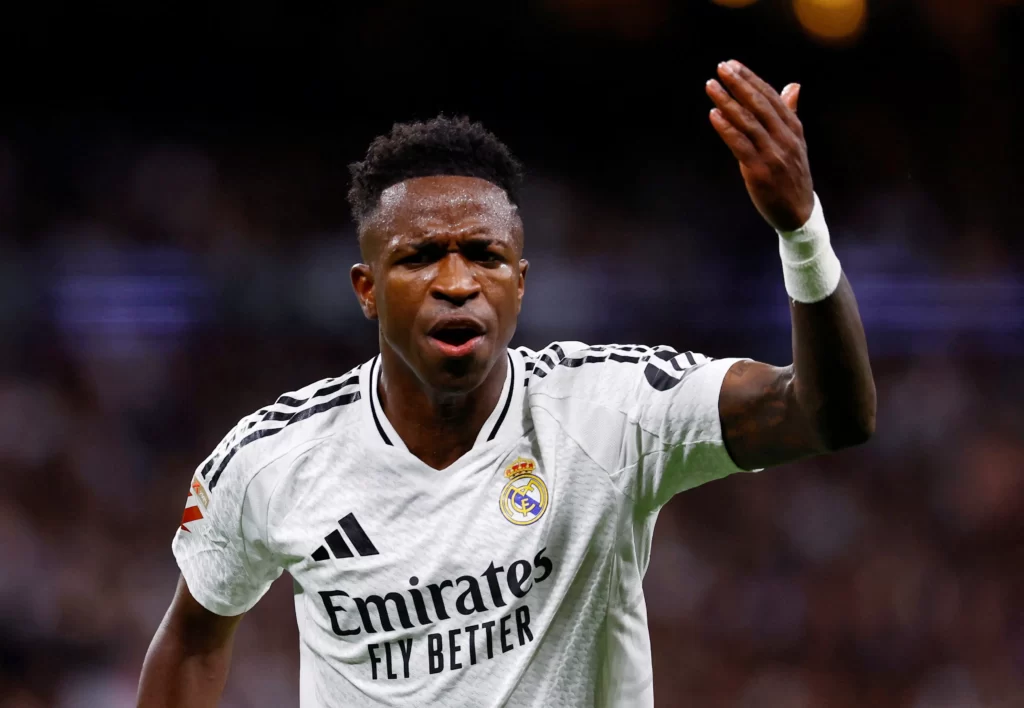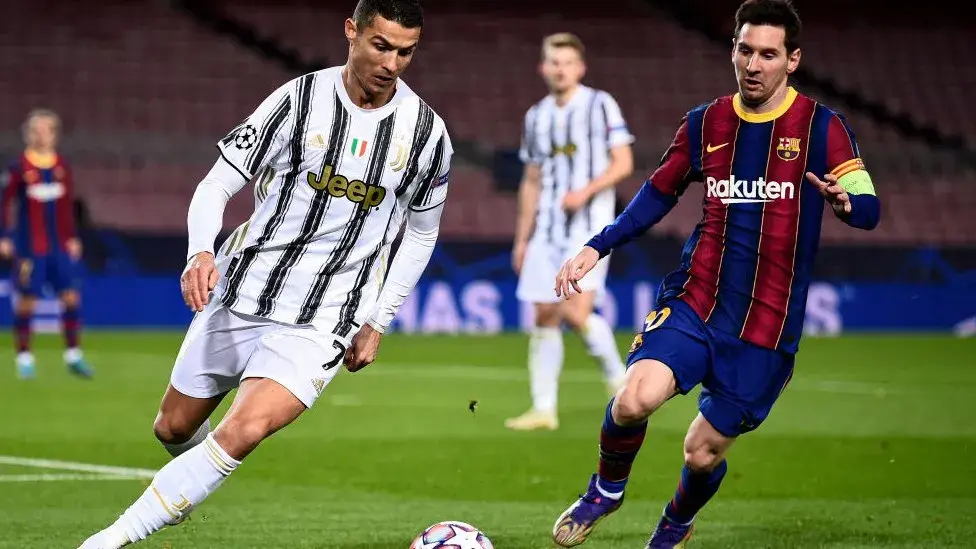In the world of football, the value of players has long been a topic of discussion, debate and impressive sums of money. The most expensive footballers are symbols of an era, icons who set the rules of the game on and off the pitch. How and why has their value reached astronomical proportions? You’ll find the answers in this article. We delve into the world of transfer records and tell you whose names have become legends, and not just because of their skills.

Erling Holand – the golden boy of football
Erling Holand is the embodiment of strength, speed and athletic flair. He is not called a goal machine for nothing: His physicality and technique allow him to dominate the pitch. One of the most important factors in his valuable contribution is his speed – Holand is capable of travelling at up to 36 km/h. This ability makes him one of the fastest players in the world. In games for Manchester City, Holand displays the perfect combination of power and precision. He is a thunderstorm for opposing defences and remains one of the players with the highest transfer value on the world market: around 180 million euros (over 18 billion roubles), and rightly so.
Reasons for the high price
His young age (23), his incredible performances and his ability to adapt to different styles of play have made him the most expensive footballer of his generation. The demand for top strikers is always high, but Holland in particular is an almost priceless asset with his unique skills, such as his mastery of the attacking end and the high game. His contract at Manchester City also includes bonuses for goals and tournament victories. This incentivises the athlete to constantly improve his performance. These factors illustrate how the value of a footballer at this level comes about and why the demand for him is so high.
Achievements and prospects
Since making his debut for top European clubs, Holand has amassed an impressive list of achievements: Top scorer in the Bundesliga, winner of the England Player of the Year title, Championship and Champions League victories. Erling’s statistics are impressive – on average he scores one goal per game, and these figures confirm his status as one of the most expensive footballers in the world. His pursuit of excellence and work on himself has kept him at the top of the game and attracted the attention of top clubs.
Kylian Mbappe – the art of being expensive
Kylian Mbappe is the quintessence of French football. Elegance, speed and unpredictability. His unique skills on the pitch, including incredible spurts of up to 38 km/h and a delicate dribbling technique, have made him a TOP footballer in the world rankings in terms of value. Mbappe not only controls the ball, but also utilises every opportunity to create dangerous chances. In Paris Saint-Germain matches, he has shown that he can adapt to any style of play.
Popularity and market price
Mbappe is not only known for his footballing talents, but also for his active role off the pitch. His popularity is growing due to marketing contracts with brands such as Nike and Hublot. The advertising contracts have a direct impact on the market for footballers and increase the price of the athlete. His transfer value is estimated at around 200 million euros (more than 20 billion roubles). Mbappe is not only the face of his club, but of French football as a whole.
Key achievements and contributions to football
Kylian Mbappe became world champion at the age of just 19, setting a unique record in the process. Since then, he has continued to win new trophies: Wins in Ligue 1, the French Cup and the European Super Cup. His contribution to the development of the game cannot be overlooked, and his successes inevitably influence his position in the ranking of the most expensive footballers.
Vinicius Júnior is a Brazilian diamond
 Vinicius Júnior is a young Brazilian talent who is rightly regarded as one of the brightest stars in world football. His style of play is reminiscent of the best traditions of the Brazilian school – dribbling, technique, spontaneity and flamboyance on the pitch. He is young and charismatic and is confidently one of the best-paid footballers. Vinicius has repeatedly shown that his talent for improvisation and his passion for the game can turn the tide at any moment.
Vinicius Júnior is a young Brazilian talent who is rightly regarded as one of the brightest stars in world football. His style of play is reminiscent of the best traditions of the Brazilian school – dribbling, technique, spontaneity and flamboyance on the pitch. He is young and charismatic and is confidently one of the best-paid footballers. Vinicius has repeatedly shown that his talent for improvisation and his passion for the game can turn the tide at any moment.
Why is his transfer worth millions?
Vinicius Júnior is worth 150 million euros (around 15 billion roubles) on the transfer market. This figure is explained not only by his talent, but also by his potential to become a world-class leader. Footballers with the highest value, like Vinicius, have the unique ability to change the outcome of games, and this quality is expensive on the market.
The road to success and the achievements
Vinicius started his journey at Flamengo and signed for Real Madrid at the age of 18. Since then, he has developed into one of the team’s most important players, winning the Champions League and La Liga titles. The road to Europe is a story of perseverance, talent and success.
Jude Bellingham is a rising star of world football
Jude Bellingham is one of the most expensive players in football. The British talent began his career at Birmingham City and was the youngest player in the club’s history. His career developed rapidly, and at the age of 17 he moved to Borussia Dortmund, where he immediately became a key player. Today, he is considered one of the most expensive footballers in the world, a status he has earned thanks to his perseverance and unique playing qualities.
Reasons for his popularity and demand for him
Jude Bellingham is a versatile midfielder who combines his vision on the pitch, his intercepting qualities and his excellent attacking skills. He is estimated to be worth 120 million euros (around 12 billion roubles). He is so highly valued on the player market because of his versatility and ability to adapt to any playing scheme.
Achievements and future plans
Jude has already managed to prove himself in the Champions League and in the England national team, establishing himself as one of the best young players in the world. He continues to develop and his future career promises to be a bright one.
Robert Lewandowski is a veteran who never ceases to surprise
Robert Lewandowski is synonymous with stability and professionalism and is considered one of the most expensive footballers for good reason. He has been one of the most successful strikers in the world for many years. Even at the age of 35, he is still one of the best-paid sportsmen. His leadership qualities, his ability to finish off attacks and his ability to lead the team forward make him a key player for Barcelona.
Factors that influence his value
Despite his age, Lewandowski is still one of the best-paid players due to his physical attributes and unrivalled experience. His contracts not only include a solid salary (around 2 billion roubles per year), but also numerous performance bonuses and endorsement deals. Robert is a prime example of a professional who stays fit and is always ready for new challenges.
Achievements and contribution to football
Robert Lewandowski has won many titles: Champions League, German and Spanish championships, the title of top scorer of the season. His record for the number of goals scored in the Bundesliga in one season will serve as a benchmark for the next generation of strikers for a long time to come.

Conclusion
 The most expensive footballers do not receive such astronomical salaries and transfer values for nothing. Their successes are the result of years of hard work, outstanding skills and a constant quest for excellence. They shape football not only as players, but also as personalities who set new standards and inspire millions. And the greater their achievements, the more they are worth.
The most expensive footballers do not receive such astronomical salaries and transfer values for nothing. Their successes are the result of years of hard work, outstanding skills and a constant quest for excellence. They shape football not only as players, but also as personalities who set new standards and inspire millions. And the greater their achievements, the more they are worth.
 en
en  de
de  ar
ar  es
es  nl
nl  hi
hi  fr
fr  it
it  pt
pt  el
el 










